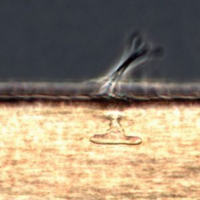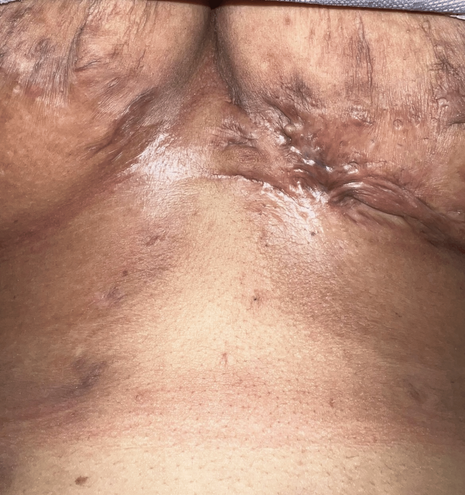https://doi.org/doi:10.1097/MD.0000000000044808
https://pubmed.ncbi.nlm.nih.gov/41029134/
#Keratin

The Onygenales represent a versatile group of fungi that primarily inhabit soils, degrading cellulose and/or keratin. While some are known human pathogens, others are osmotolerant or colonize chitin substrates such as insects. The marine environment, characterized by 3.5% salinity and chitin as the dominant polysaccharide, represents an intriguing niche for these fungi. However, fungal diversity in this environment remains poorly studied. This study investigated the culturable diversity of Onygenales in marine sediments, explored their global biogeography, and assessed their adaptability to marine conditions. Marine sediments were collected near river mouths and other coastal areas along the Catalan coast (Spain). Identification was based on a polyphasic approach; global distribution patterns were assessed through the GlobalFungi database, and adaptability was evaluated through osmotolerance and substrate degradation assays (cellulose, chitin, keratin). We recovered 32 strains, of which 24 represented 16 known species distributed in Gymnascella, Gymnoascus, Narasimhella, and Sporendonema (Gymnoascaceae); Malbranchea (Malbrancheaceae); Myriodontium (Neoarthropsidaceae); and Aphanoascus and Byssoonygena (Onygenaceae). The remaining eight strains were delineated as six novel species, including a new genus: Gymnoascoideus alboluteus sp. nov., Malbranchea parafilamentosa sp. nov., M. sedimenticola sp. nov., M. seminuda sp. nov., M. sexualis sp. nov., and Deilomyces minimus gen. et sp. nov. In addition, all strains degraded cellulose, and most tolerated up to 10% NaCl. Only four species that also degraded chitin (Malbranchea parafilamentosa, M. sexualis, Myriodontium keratinophilum, and Sporendonema casei) could be considered facultative marine fungi. This work evidences the great diversity of onygenalean fungi in marine sediments and underscores their metabolic adaptability to marine conditions.
Palmoplantar skin is structurally and molecularly distinct from other body sites. Notably, the type 1 keratin 9 ( KRT9 /K9) is exclusively expressed in palmoplantar epidermis. Mutations in KRT9 /K9 are causative for epidermolytic palmoplantar keratoderma (EPPK), a genetic disorder typified by palmoplantar keratoderma. Surprisingly little is known about the ontogeny, regulation and significance of Krt9 /K9. Here we characterize the regulation of Krt9 /K9 in postnatal palmoplantar epidermis and uncover a novel role of K9 in modulating YAP1 signaling. Expression of Krt9/ K9 rises dramatically post-birth, following a transient induction of the stress-related keratin 16 (Krt16/ K16 ). Krt9 null mice exhibit elevated K16 and aberrant nuclear-localized YAP1 by postnatal day 3. K9 interacts with 14-3-3σ to sequesters YAP1 in the cytoplasm, while EPPK-causing pathogenic variants impair these properties. Inhibition of YAP1 in vivo ameliorates palmoplantar keratoderma in Krt9 null mice. These findings provide novel insight into the adaptation of palmoplantar skin and suggest new therapeutic avenues for diseases featuring PPKs. ![Figure][1]</img> HIGHLIGHTS ### Competing Interest Statement The authors have declared no competing interest. National Institutes of Health, https://ror.org/01cwqze88, R01 AR079418, F31 AR083249, P30 CA046592 [1]: pending:yes
The hair cosmetic industry is constantly searching for new ingredients and innovative materials that can help enhance properties, such as softness, shine, shape, and color. However, conventional products contain harmful chemicals. In this study, we developed a biobased alternative using a recombinant protein composed of repetitions of consensus motifs from the structural proteins silk, elastin, and keratin, termed SELP::KP. This protein was expressed in Escherichia coli and purified by a nonchromatographic method to high purity. Fourier-transform infrared spectroscopy (FTIR) confirmed the β-sheet-rich structure, characteristic of silk and SELP-like proteins. Calorimetry studies confirmed the high thermal stability of SELP::KP. When applied to hair, SELP::KP colocalized at both the cuticle and cortex, indicating strong penetration capacity. Mechanical testing of treated virgin hair showed significant improvements: Young’s modulus increased by 34.9%, and extensibility improved by 12.4% compared to untreated controls, indicating enhanced strength and elasticity. Additionally, the protein’s potential as a safer perming agent was evaluated, maintaining a curling effect similar to the chemical treatment but with lower damaging effects. Furthermore, SELP::KP was shown to reduce by half the combing strength needed, acting as an effective conditioning agent. This research highlights SELP::KP as a promising biobased copolymer for hair cosmetics, offering both styling benefits and improved hair health, as a leave-in treatment or a hair mask that aids in combability and perming service.

The follicular occlusion tetrad is a chronic inflammatory complex that consists of four co-related conditions in which follicles are blocked with keratin rupture and lead to inflammation. These conditions include hidradenitis suppurativa (HS), acne conglobata (AC), dissecting cellulitis of the scalp (DCS), and pilonidal cyst (PC). Our unique case reports a 43-year-old female patient who presented with a 36-year history of all four elements of the tetrad after previous treatment with ciprofloxacin, spironolactone, and salicylic acid. Our case is notable as the patient presented after being on semaglutide for weight loss, as well as the first report of the full tetrad in a female patient. A comprehensive review of the follicular occlusion tetrad was conducted using current literature. The goal of the literature review was to provide a general overview of the patient population diagnosed with follicular occlusion tetrad. Additionally, weight loss medications were discussed as potential treatments for patients given the link between the disease and obesity. Further study is warranted to investigate the efficacy of newer therapies in managing patients.